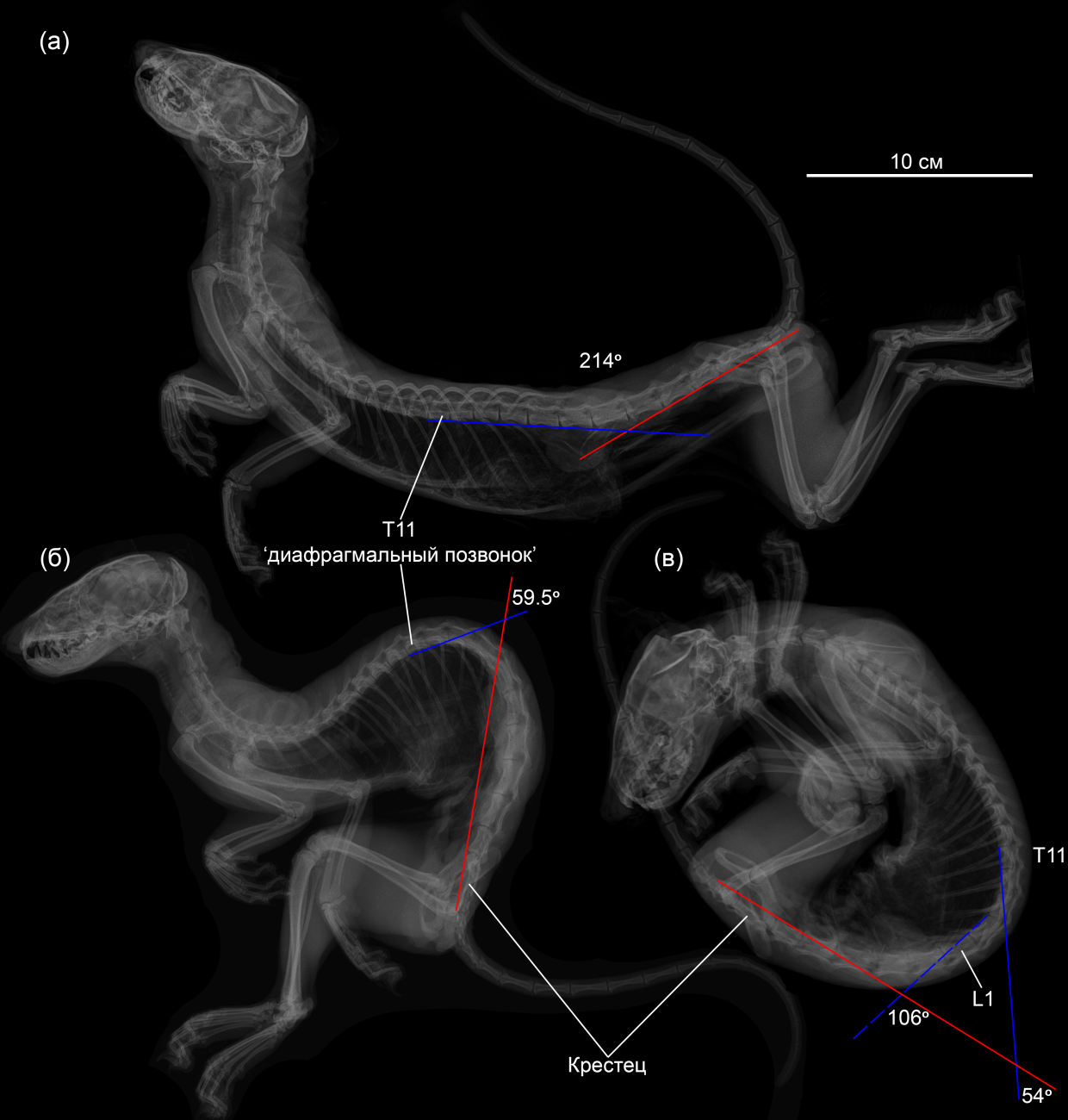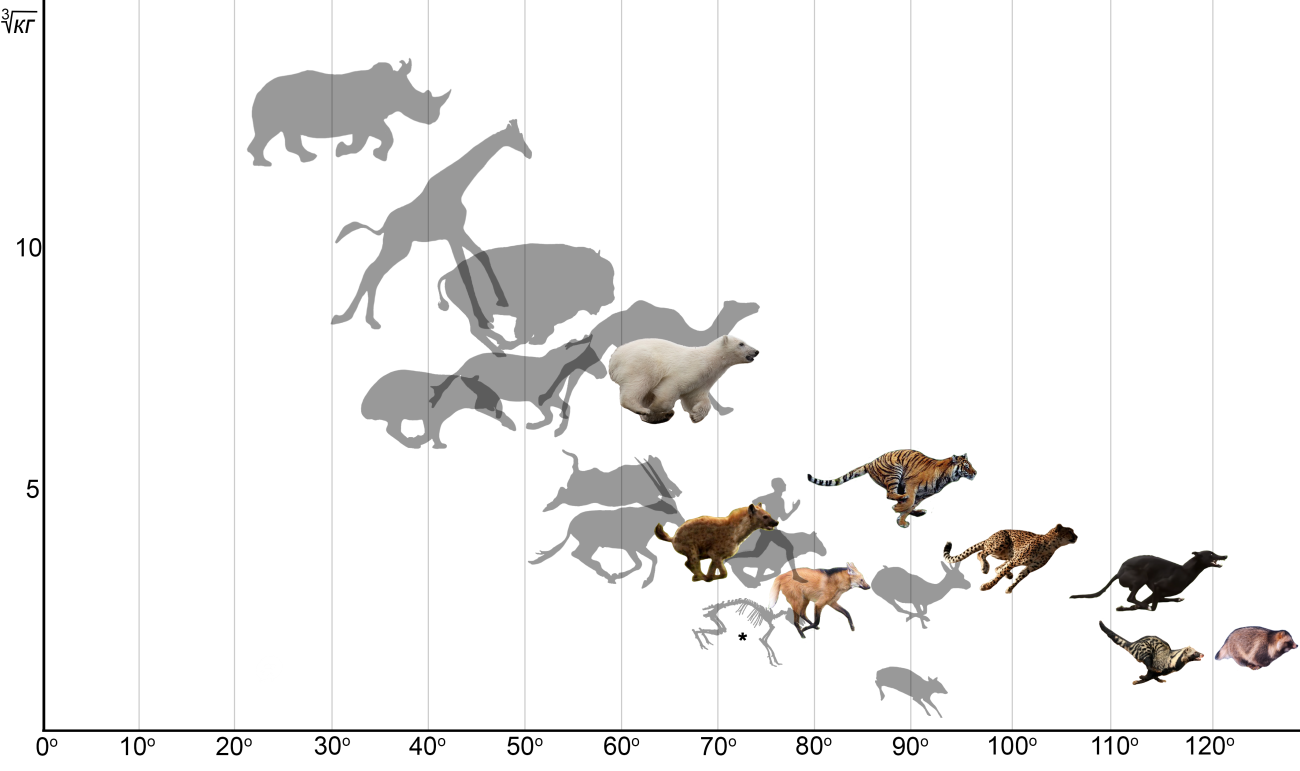
Swift pursuits over short distances, long and grueling pursuit of the victim, ambush and jump, meditative searches for carrion on the plains, hunting in the harsh conditions of the Arctic and in the hot humid climate near the equator, hunting in tree branches and burrows. Regardless of weight categories, which range from hundreds of grams in small mustelids to hundreds of kilograms in bears and large cats, carnivorous mammals (order Carnivora) remain among the most successful carnivores on our planet. One of the foundations for the harmonious perfection of their locomotor system is the flexibility of the spinal column, which is in direct relationship with the characteristics of locomotion and hunting strategy. In their new article published in the Journal of Anatomy, Ruslan Belyaev and Natalya Prilepskaya, members of the Laboratory of Ecology, Physiology and Functional Morphology of Higher Vertebrates of the Institute of Ecology and Evolution, Russian Academy of Sciences, studied the mobility of the neck and back in 34 different species belonging to 6 families of terrestrial carnivores. This article is the first comparative study of this type.
The use of phylogenetic methods of data analysis made it possible to show that such structural characteristics of the spinal column as the vertebral column (the number of vertebrae in different sections) and articular formula, as well as the proportions of the lengths of the dorsal modules, have a strong phylogenetic signal. This indicates high homogeneity in the structural characteristics of the back in closely related taxa. In contrast, most spinal mobility traits show little phylogenetic signal. This means that within the existing structure (the stabilization of which could have occurred quite early in the evolutionary history of large phylogenetic lineages of carnivores) various biomechanical solutions can be implemented. Thus, the mobility of the spine is highly plastic and easily adapts to the ecological conditions of different species.
The only characteristic of mobility for which the researchers found a strong phylogenetic signal was flexibility of the cervical spine in the frontal plane. When hunting, predators implement two main strategies for capturing prey: using the claws on their paws or using their mouths. The work showed that canids and hyenas that use their jaws to grab prey are characterized by a significant increase in the relative length of the cervical region, accompanied by an increase in the flexibility of the cervical joints in the sagittal and especially frontal planes. Given that hyenas and canids were hot spots of positive autocorrelations for both increased flexibility and higher relative neck length, we can speculate that these specializations may have occurred quite early in these two phylogenetic lineages and were related to prey capture method. It is interesting to note that despite the fact that in representatives of other families of terrestrial carnivores the relative length of the neck is one and a half to two times inferior to canids and hyenas, its flexibility (both in the sagittal and frontal plane) remains quite high and significantly exceeds it in short-necked ungulates. One of the most important specializations of the mammalian back is the ability for vertical movements during running. It was this that allowed land mammals to master galloping, a fast and very economical way of moving quickly. Vertical flexibility is localized in the posterior part of the back, and the cycle of flexion and extension of the spine is synchronized with the cycle of action of the hind limbs. Previous studies of galloping in small mammals have shown that the boundary of the vertically flexible module of the back can either exactly coincide with the boundary of the thoracic and lumbar regions, or, in addition to the lumbar region, involve several more of the last thoracic joints. However, in none of the previously studied species did this module cover all postdiaphragmatic joints (joints with the ‘locking’ type of zygapophyseal articulation). In a new study, X-ray imaging of the pine marten made it possible to show that this particular variant of regionalization of mobility is characteristic of small mustelids. Moreover, the total flexibility of the thoracic ‘post-diaphragmatic’ joints in mustelids is only slightly inferior to the mobility of the lumbar region, accounting for ~40% of the total vertical flexibility of the back.
In general terms, the study showed that the lumbar spine of carnivores is noticeably more mobile than that of ungulates, with which they compete in running as predator and prey. On average, carnivores are superior in vertical mobility to artiodactyls by ~25°, and perissodactyls by ~40°. Despite the general dorsomobility (high vertical flexibility of the back), the mobility of the lower back in most carnivores is in the range of variability of artiodactyls; only some representatives of Canidae, Felidae, Mustelidae and Viverridae exceed the flexibility of the lower back of all ungulates without exception. The article also showed that the flexibility of the spine in carnivores and artiodactyls is distributed differently between flexion and extension. Thus, the most dorsomobile artiodactyls are not inferior to or even superior to carnivores in the ability to extend the spine during gallop, while carnivores are significantly superior to ungulates in their ability to flex it. Flexion of the back allows carnivores to more effectively move their hind legs forward in the swing phase, while extension serves the propulsion of the hind legs in the stance phase. The fact that even the largest carnivores are significantly superior to any ungulates in the ability to bend their backs is probably due to the much shorter digestive tract and the lack of chambers for cellulose fermentation.

The total vertical flexibility in the lumbar region of carnivores largely depends on the specifics of running and the method of hunting. Thus, adaptation to long and enduring pursuit of prey in hyenas is accompanied by a noticeable decrease in vertical flexibility in the lumbar region. More dorsally stable running is also characteristic of Ursidae and the long-legged maned wolf. Representatives of Felidae and Canidae have, on average, significantly greater available mobility in the lumbar region. However, storyboards of hunting scenes of these animals showed that they fully use the flexibility of their backs only during key moments of the hunt associated with acceleration, direct capture of prey, or when running in a straight line at maximum speed. At the same time, even most of the time of active pursuit of the victim occurs at a lower speed, at which a fairly dorsally stable gallop is used. This is due, among other things, to the need to actively maneuver when catching prey. Running at maximum speed deprives animals of the ability to effectively make sharp maneuvers.

Source: Ruslan I. Belyaev, Polina Nikolskaia, Andrey V. Bushuev, Aleksandra A. Panyutina, Darya A. Kozhanova, & Natalya E. Prilepskaya. (2024) Running, jumping, hunting, and scavenging: Functional analysis of vertebral mobility and backbone properties in carnivorans. Journal of Anatomy, 244(2), 205–231. Available from: https://doi.org/10.1111/joa.13955
